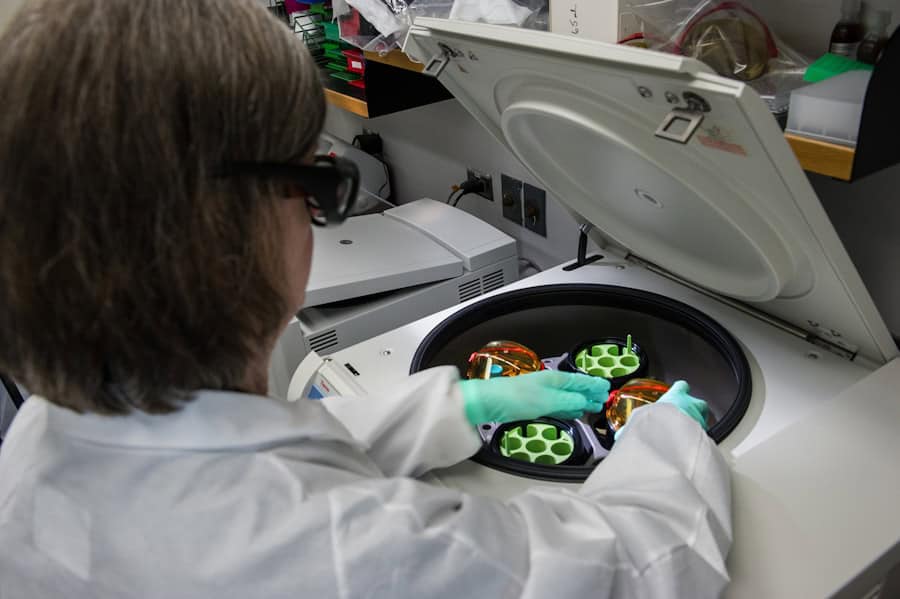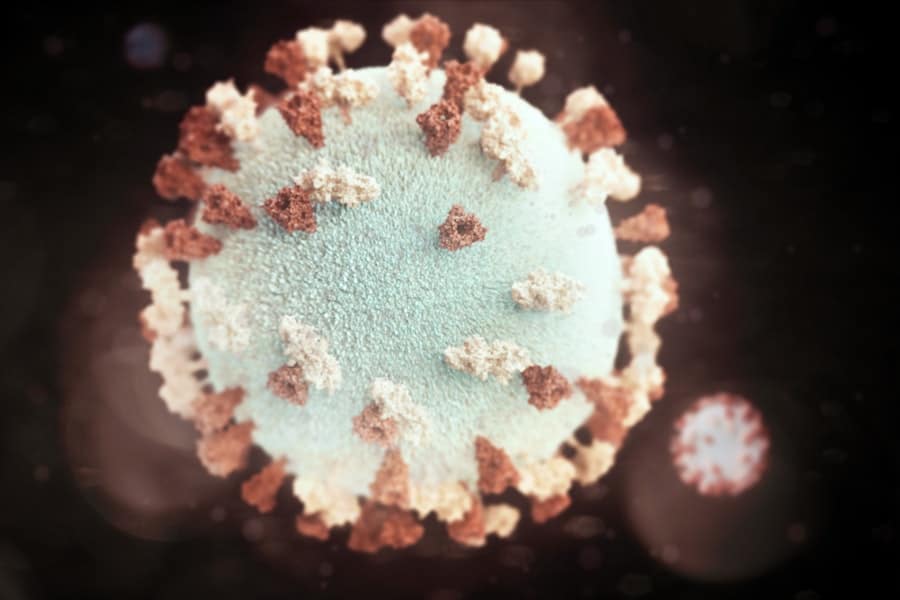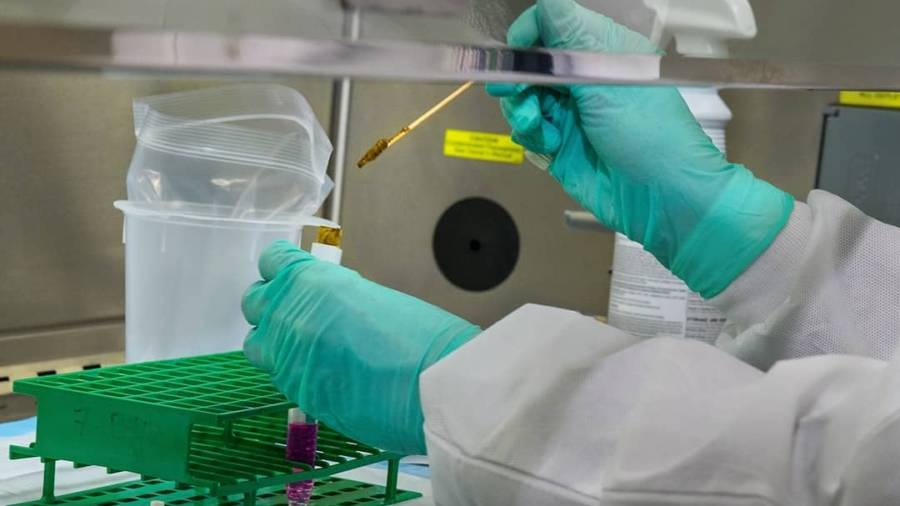Nanotechnology, the manipulation of matter on an atomic or molecular scale, has emerged as a transformative force in various fields, particularly in biotechnology. This interdisciplinary domain combines principles from physics, chemistry, biology, and engineering to create novel materials and devices that can operate at the nanoscale, typically defined as 1 to 100 nanometers. The unique properties exhibited by materials at this scale, such as increased surface area, enhanced reactivity, and quantum effects, have opened new avenues for research and application in biotechnology.
As scientists delve deeper into the nanoscale realm, they uncover opportunities to address some of the most pressing challenges in medicine, agriculture, and environmental science. The integration of nanotechnology into biotech research has led to significant advancements in areas such as drug delivery, diagnostics, and tissue engineering. By leveraging nanoscale materials and devices, researchers can develop more effective therapies and diagnostic tools that are tailored to individual patient needs.
The ability to manipulate biological systems at the nanoscale not only enhances the efficacy of existing treatments but also paves the way for innovative solutions that were previously thought to be unattainable. As we explore the various applications of nanotechnology in biotech research, it becomes evident that this field is poised to revolutionize healthcare and improve the quality of life for countless individuals.
Key Takeaways
- Nanotechnology has revolutionized biotech research by enabling precise manipulation of materials at the nanoscale.
- Nanotechnology has significantly improved drug delivery systems by enhancing drug solubility, stability, and targeting specific cells or tissues.
- In tissue engineering and regenerative medicine, nanotechnology has played a crucial role in creating scaffolds and delivery systems for cell growth and tissue regeneration.
- Advancements in nanosensors have led to more sensitive and specific disease detection and diagnosis, improving early intervention and treatment outcomes.
- Nanotechnology has influenced genetic engineering and gene therapy by enabling targeted delivery of genetic materials and enhancing gene editing techniques.
Nanotechnology’s Impact on Drug Delivery Systems
One of the most promising applications of nanotechnology in biotechnology is its impact on drug delivery systems. Traditional drug delivery methods often face challenges such as poor solubility, rapid metabolism, and non-specific distribution, which can limit therapeutic efficacy and increase side effects. Nanotechnology offers innovative solutions to these issues by enabling the design of nanoparticles that can encapsulate drugs and deliver them directly to target sites within the body.
This targeted approach not only enhances the bioavailability of drugs but also minimizes systemic toxicity. For instance, liposomes and polymeric nanoparticles have been extensively studied for their ability to improve drug solubility and stability. These nanoscale carriers can be engineered to release their payload in response to specific stimuli, such as changes in pH or temperature, allowing for controlled release profiles.
Moreover, surface modifications can be employed to enhance the targeting capabilities of these carriers. By attaching ligands or antibodies that recognize specific cell types, researchers can direct drug-loaded nanoparticles to cancer cells or inflamed tissues, thereby increasing therapeutic efficacy while reducing off-target effects. This level of precision in drug delivery represents a significant advancement over conventional methods.
Nanotechnology’s Role in Tissue Engineering and Regenerative Medicine

Tissue engineering and regenerative medicine are fields that have greatly benefited from advancements in nanotechnology. The development of nanostructured scaffolds has revolutionized the way researchers approach tissue regeneration. These scaffolds mimic the natural extracellular matrix (ECM) found in tissues, providing a supportive environment for cell attachment, growth, and differentiation.
By manipulating the physical and chemical properties of these nanostructures, scientists can create scaffolds that promote specific cellular behaviors essential for tissue repair. For example, electrospun nanofibers have gained attention for their ability to replicate the fibrous architecture of natural tissues. These nanofibers can be tailored in terms of diameter, porosity, and surface chemistry to enhance cell adhesion and proliferation.
Additionally, incorporating bioactive molecules such as growth factors or peptides into these scaffolds can further stimulate tissue regeneration. Research has shown that nanostructured scaffolds can support the growth of various cell types, including stem cells, which are pivotal in regenerative medicine. By providing a conducive environment for stem cell differentiation into specific lineages, these scaffolds hold promise for applications ranging from wound healing to organ regeneration.
Advancements in Nanosensors for Disease Detection and Diagnosis
Nanosensors represent another groundbreaking application of nanotechnology in biotechnology, particularly in disease detection and diagnosis. These devices leverage nanoscale materials to detect biological markers with high sensitivity and specificity. The unique properties of nanomaterials enable the development of sensors that can identify minute quantities of biomolecules associated with various diseases, including cancer, infectious diseases, and metabolic disorders.
One notable example is the use of gold nanoparticles in biosensing applications. Gold nanoparticles exhibit strong surface plasmon resonance, which can be harnessed for optical detection methods. When functionalized with specific antibodies or DNA probes, these nanoparticles can selectively bind to target biomarkers.
Upon binding, changes in optical properties can be measured, allowing for rapid and sensitive detection of disease markers.
Moreover, nanosensors can be integrated into wearable devices for continuous health monitoring.
For instance, researchers are developing nanosensors that can detect glucose levels in sweat or interstitial fluid, providing a non-invasive alternative for diabetes management. These advancements not only enhance diagnostic capabilities but also empower patients with real-time data about their health status.
Nanotechnology’s Influence on Genetic Engineering and Gene Therapy
The intersection of nanotechnology with genetic engineering and gene therapy has opened new frontiers in molecular medicine. Traditional methods of delivering genetic material into cells often face limitations related to efficiency and safety.
One approach involves using lipid-based nanoparticles for mRNA delivery in vaccine development. The success of mRNA vaccines during the COVID-19 pandemic highlighted the potential of this technology. Lipid nanoparticles encapsulate mRNA molecules and protect them from degradation while promoting cellular uptake.
Once inside the cell, the mRNA is translated into proteins that elicit an immune response. This method not only enhances vaccine efficacy but also allows for rapid development and deployment against emerging infectious diseases. In addition to vaccines, nanotechnology is being explored for gene editing applications using CRISPR-Cas9 technology.
Delivering CRISPR components via nanoparticles can improve the precision and efficiency of gene editing while reducing off-target effects. Researchers are investigating various nanoparticle formulations to optimize delivery methods for therapeutic gene editing in genetic disorders such as cystic fibrosis or muscular dystrophy.
Nanotechnology’s Contribution to Biomaterials and Biomedical Devices

The development of biomaterials is another critical area where nanotechnology has made significant contributions. Nanoscale materials can be engineered to possess specific mechanical, chemical, and biological properties that enhance their performance in biomedical applications. For instance, nanoparticles can be incorporated into hydrogels to create smart biomaterials that respond to environmental stimuli such as temperature or pH changes.
These smart biomaterials have potential applications in drug delivery systems where they can release therapeutic agents in response to specific triggers within the body. Additionally, nanostructured surfaces can be designed to promote cell adhesion and proliferation while preventing bacterial colonization—a crucial consideration for implants and prosthetics. By modifying surface properties at the nanoscale level, researchers can create materials that are more biocompatible and reduce the risk of infection.
Furthermore, nanotechnology has enabled the development of advanced biomedical devices such as implantable sensors and diagnostic tools. For example, nanoscale electrodes can be used in neural interfaces to monitor brain activity with high spatial resolution. These devices hold promise for applications in neuroprosthetics and brain-computer interfaces, potentially transforming how we treat neurological disorders.
Ethical and Regulatory Considerations in Nanotechnology and Biotech Research
As with any emerging technology, the integration of nanotechnology into biotech research raises important ethical and regulatory considerations. The unique properties of nanomaterials may pose unforeseen risks to human health and the environment. Consequently, there is a pressing need for comprehensive risk assessments that evaluate the safety of nanomaterials used in medical applications.
Regulatory frameworks must evolve to address the complexities associated with nanotechnology. Existing regulations may not adequately cover the unique characteristics of nanoscale materials; thus, new guidelines are necessary to ensure that products developed using nanotechnology undergo rigorous safety evaluations before reaching the market. Collaboration between scientists, regulatory agencies, and policymakers is essential to establish standards that protect public health while fostering innovation.
Moreover, ethical considerations surrounding access to nanotechnology-based therapies must be addressed. As these technologies advance rapidly, disparities in access could exacerbate existing healthcare inequalities. Ensuring equitable access to novel treatments will require thoughtful policy interventions that prioritize inclusivity and affordability.
Future Directions and Challenges in Integrating Nanotechnology into Biotech Research
Looking ahead, the integration of nanotechnology into biotech research presents both exciting opportunities and formidable challenges. One significant direction is the continued exploration of multifunctional nanoparticles capable of simultaneously delivering therapeutic agents while providing diagnostic information. This convergence of therapy and diagnostics—often referred to as theranostics—holds great promise for personalized medicine.
However, challenges remain regarding scalability and reproducibility in nanoparticle synthesis and characterization. As researchers strive to translate laboratory findings into clinical applications, ensuring consistent quality across batches will be crucial for regulatory approval and patient safety. Additionally, interdisciplinary collaboration will be vital for overcoming barriers to innovation.
Bridging gaps between materials science, biology, engineering, and clinical practice will facilitate the development of integrated solutions that harness the full potential of nanotechnology in biotechnology. In conclusion, while significant progress has been made in understanding and applying nanotechnology within biotech research, ongoing efforts are needed to address ethical concerns, regulatory challenges, and technical hurdles as we move toward a future where these technologies can be fully realized for societal benefit.
A related article to The Role of Nanotechnology in Advancing Biotech Research is a review of the digital marketing tool Screpy. This article discusses the features and benefits of Screpy in optimizing website performance and improving online visibility. To learn more about how Screpy can enhance your digital marketing efforts, check out the Screpy review.
FAQs
What is nanotechnology?
Nanotechnology is the manipulation of matter on an atomic and molecular scale. It involves the design, characterization, production, and application of structures, devices, and systems by controlling shape and size at the nanometer scale.
How does nanotechnology advance biotech research?
Nanotechnology has the potential to revolutionize biotech research by enabling precise manipulation and control of biological systems at the nanoscale. This can lead to advancements in drug delivery, imaging, diagnostics, and tissue engineering.
What are some applications of nanotechnology in biotech research?
Some applications of nanotechnology in biotech research include targeted drug delivery systems, biosensors for detecting biomarkers, nanoscale imaging techniques, and nanomaterials for tissue regeneration.
What are the benefits of using nanotechnology in biotech research?
The benefits of using nanotechnology in biotech research include improved precision and efficiency in drug delivery, enhanced sensitivity and specificity in diagnostics, and the ability to create biomimetic materials for tissue engineering.
Are there any potential risks or concerns associated with nanotechnology in biotech research?
Some potential risks and concerns associated with nanotechnology in biotech research include the potential toxicity of nanomaterials, environmental impact, and ethical considerations related to the use of nanotechnology in biological systems.

